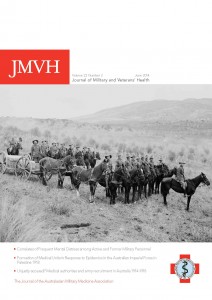Correction of Midfacial Fractures using a Dentofacial traction appliance
Abstract
The management of midfacial fractures during the First World War was problematic due to limited diagnostic resources and operative techniques. We present a well-documented use of a dentofacial traction appliance to manage severe midfacial injuries sustained in combat during the First World War.




 Download the whole edition here.
Download the whole edition here.


